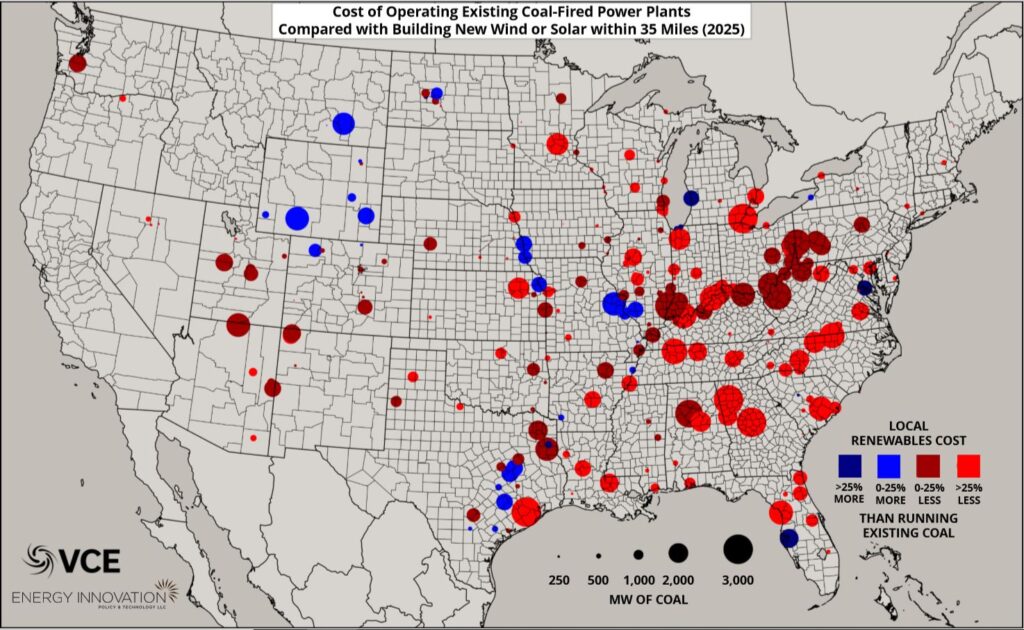America has officially entered the “coal cost crossover” – where existing coal is increasingly more expensive than cleaner alternatives. Today, local wind and solar could replace two thirds of the U.S. coal fleet at an immediate savings to customers. By 2025, this number grows to three quarters of the coal fleet.
This analysis complements existing research into the costs of clean energy undercutting coal costs, by focusing on which coal plants could be replaced locally (within 35 miles of the existing coal plant) at a saving.
It suggests local decision-makers should consider plans for a smooth shut-down of these old plants—assessing their options for reliable replacement of that electricity, as well as financial options for communities dependent on those plants.
This report should begin a longer conversation about the most cost-effective replacement for coal, which may include combinations of local or remote wind, solar, transmission, storage, and demand response.
Research Report: The Coal Cost Crossover
Full research report and appendices detailing the “Coal Cost Crossover,” where rapid wind and solar price declines have made the combined going-forward costs of existing coal-fired power plants more expensive than the all-in costs of building new renewable energy generation. This analysis was prepared by Energy Innovation and Vibrant Clean Energy.
Maps: Cost of operating existing coal compared to building new local renewables
High-resolution maps detailing the marginal cost of energy (MCOE) in 2018 and 2025 for existing U.S. coal-fired power plants compared with building new wind or solar generation resources within 35 miles.
Maps: Cost of building new wind and solar generation
High-resolution maps detailing the levelized cost of energy (LCOE) in 2018 and 2025 for building new wind or solar generation resources within 35 miles of existing U.S. coal-fired power plants.
Datasets: Coal, solar, and wind datasets
Plant-by-plant estimates of the current MCOE for all existing U.S. coal-fired power plants detailing all going-forward operational costs, as well as current and future LCOE data for building new wind and solar projects on a fine resolution scale, both available for 2018 and 2025.









